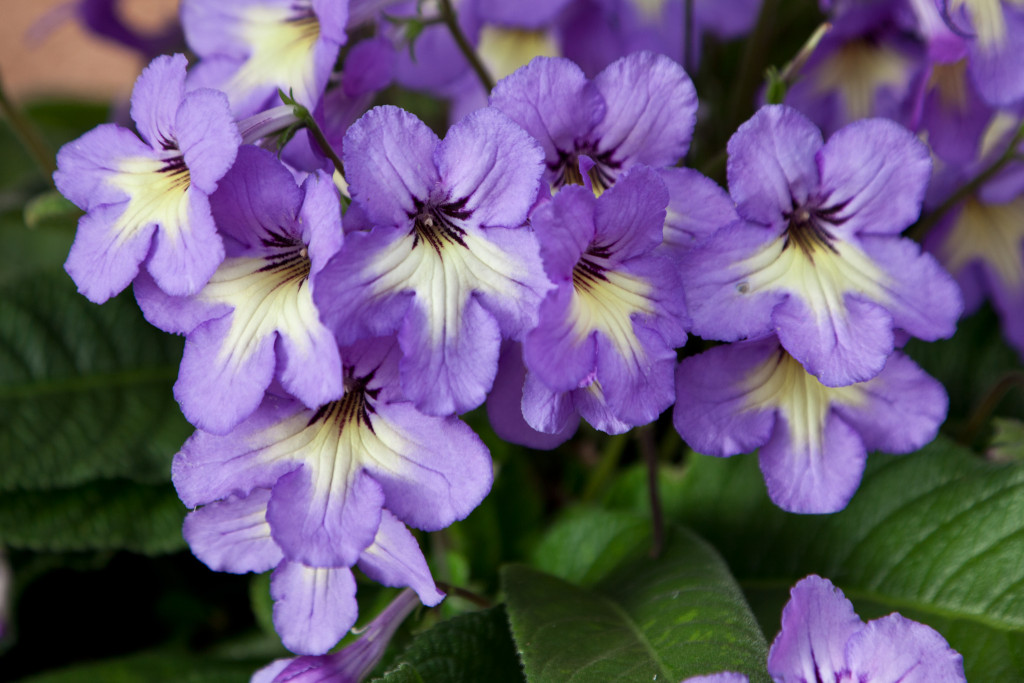
Crop Culture Report: Streptocarpus Ladyslippers Series
The history of streptocarpus as a cultivated plant dates back to at least 1826 when a cousin to the current form was first introduced into the United Kingdom. The genus is known for its ability to produce exotic-looking blooms indoors, in relatively low light conditions, with very little care. Modern cultivars display a more controlled foliage growth and will flower much more freely than varieties sold in the past. Streptocarpus Ladyslippers exemplifies the best of modern breeding, boasting a much broader range of colors, which includes red and yellow, both difficult to achieve.
Green Fuse Botanicals positions the streptocarpus Ladyslippers series as a “lifestyle plant,” meaning they flourish in the home near a window and can also be integrated into outdoor shady areas for use in hanging baskets and patio containers. Retailers who sell Ladyslippers will set themselves apart from others with such a unique and long-lasting blooming plant. The Ladyslippers series now consists of eight colors including the newly introduced Blue White Center and Deep Blue Vein.
Streptocarpus Ladyslippers are propagated from tissue culture to ensure disease-free plants and programmable finish. Plants can be grown in 5-inch (quarts) and 6-inch (15cm) containers, but planting multiple liners in a larger bulb pan or basket will result in a very impressive retail item.
Scheduling
Ladyslippers are sold year round but the emphasis is placed on spring finishing. A liner received in late October can be targeted for finishing mid-January for Valentine’s Day sales, and liners received early February will finish easily for Mothers Day sales.
A general production period for a 6-inch pot with a single plant or 8-inch container with two or three plants is 12 to 14 weeks from a 72-cell liner.
Light Level and Temperature
Streptocarpus are sensitive to high light levels and direct sun. The best intensity is 1,000 to 1,500 foot-candles with slightly lower intensities from June through August. Fifty to 60 percent shade is recommended to reduce the risk of damage to the leaf surface due to high leaf temperatures. Such damage would be indicated by yellowing of leaves or darkening and hardening of leaf margins. During colder months, irrigation water temperature should be monitored and overhead irrigation minimized, as water that is significantly colder than the average leaf temperature can create unsightly yellowing or blotches. The use of sub irrigation is recommended as the best way to avoid any type of leaf splotches or leaf residues.
Streptocarpus are perfect for the home living environment, as they prefer temperatures of 67 to 75° F. Warm day temperatures above 90° F will stress plants resulting in reduced flower size and longevity. Cooler temperatures will extend the crop time and invite other physiological troubles for roots and/or leaves.
Media Requirements
Ladyslippers prefer soil that is not constantly wet, so allow the media to dry well between irrigations (a peat-based media will be blonde in color). If the soil remains over saturated for long periods of time, the roots cannot function properly in the movement of water or minerals. In extreme cases, stem rot may take place at the base of the plant and the leaves will wilt. Vent the production area to maintain lower humidity levels going into the evening in order to help control leaf diseases.
Fertilizer and pH Requirements
Streptocarpus do not have specific nutritional needs and are easily grown at lower nutrient levels. A fertilizer rate of 100- to 150-ppm nitrogen using a balanced formula that includes minor elements is suggested. Use a nitrate-based feed and stay away from ammonium-based fertilizers. This regimen will help eliminate stretch and oversized leaves which detract from the quality of the finished plants. A limited amount of feed applied will reduce salt buildup and possible damage to roots. Maintain EC at approximately 0.8 to 1.0, and keep the pH at 6.0.
Pest and Disease
Proper growing conditions (adequate shade and suitable soil moisture) and good hygiene insures reduced plant stress and will minimize the potential for insect and disease problems. The most common pests are aphids, thrips, whitefly and mealy bug. Scout and spray if needed as pests are found. In certain areas, cyclamen mite may also be an issue. Monthly preventative drenches of a broad-spectrum fungicide will control Botrytis and Crown Rot and are recommended for growing and finishing a high-quality crop.
Other Comments
When transplanting, take care to ensure that the top of the liner is not buried, but is placed at a level equal to the surrounding soil. If the crown of the plant is buried, plant growth may be slowed or the crown may rot. If the top of the liner is planted too high, the finished plants may become floppy. Once established and acclimated to the home or shaded patio, few plants offer a more satisfying combination of beauty and minimal maintenance.


 Video Library
Video Library 




















